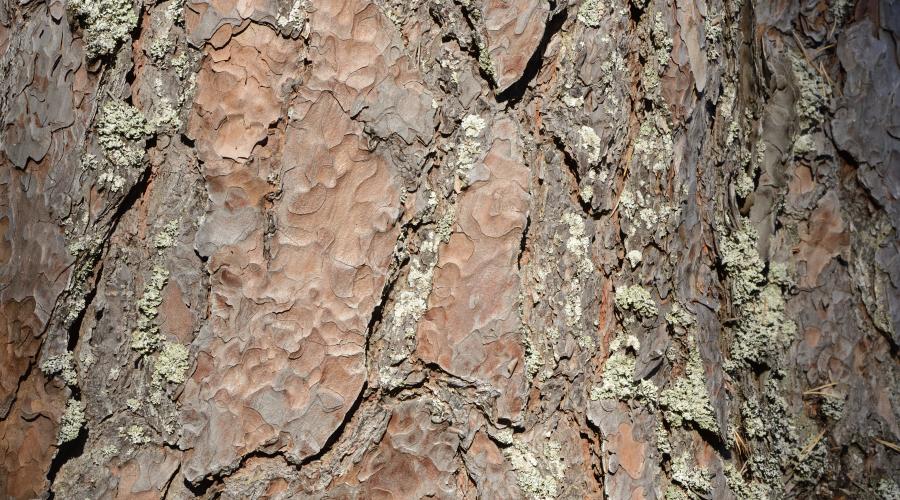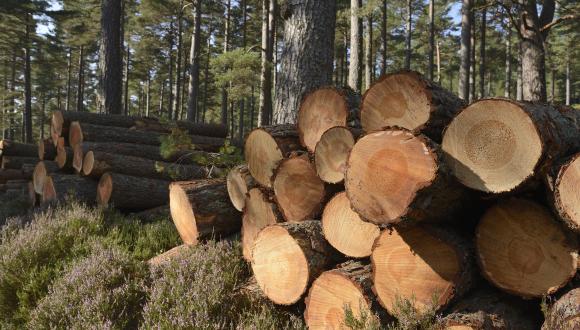
History of Scotland’s woodlands
Much of Scotland used to be covered in forest. Today, native woodland covers just 4% of the total land area.
After the retreat of the ice some 11,000 years ago, Britain was colonised first by boreal species and later by more temperate vegetation. Birch was the first dominant tree, followed by hazel, pine and oak. Woodland cover around 5,000 years ago reached Shetland and the Western Isles.
Woodland cover then began to decline, largely due to early agriculture. By the time the Roman legions of Agricola invaded Scotland in AD 82, at least half of our natural woodland had gone. Much of it was replaced by peatland, partly as a result of the cooler, wetter climate and partly because of human activities.
In the 17th and 18th centuries, many of the remaining woods were heavily exploited for timber, charcoal and tanbark. But this probably also secured their continued existence.
By the 19th century, interest in native woods was in decline. By 1900, woodland covered only about 5% of Scotland’s land area, as many small and isolated blocks. This led to the loss of species requiring larger, unbroken blocks of native woodland – especially larger mammals and predators.
Age and biodiversity
Woodland’s importance for biodiversity is closely related to its age. In Scotland, ancient woodland is defined as land that is currently wooded and has been continually wooded since at least 1750.
The wildlife communities, soils and structure of ancient woodlands have had the longest time to develop. So these aspects are generally, but not always, richer than in more recent woods.
Land use changes
General Roy compiled the Military Survey of Scotland around 1750, which lets us verify the continuity of woodland cover at that time across Scotland.
Major land-use changes occurred after the Jacobite rebellion of 1745, including the:
- Clearances
- switch from a cattle-based to a sheep-based economy
- rapid increase in commercial plantations
- development of large shooting estates – with, by the mid-20th century, an expanding deer population
Ordnance Survey one-inch first edition maps produced in the mid-19th century show much more woodland. The number of plantations grew in the late 18th and early 19th centuries, and so did the extent of what appears to be semi-natural woodland. This growth reflects lapses on the part of the Roy surveyors as well as genuine increases in woodland cover.
The Nature Conservancy Council compiled inventories of ancient, long-established and semi-natural woodland. A more complex classification was developed for woodlands in Scotland thanks to detailed historical sources.
The inventories were first published in 1987 and have been widely used for woodland management, local planning and strategic policy development. You can download inventory data sets from the Natural Spaces portal.
Read A guide to understanding the Scottish Ancient Woodland Inventory (AWI)
Human influence
Almost all of our remaining fragments of native woodland have, at some time, been modified by man’s activities. Traces of all these actions can be viewed in the surviving woodland.
For example, the history of plantation in Scotland goes back to the 18th century, though there was little real development until the 20th century. But every wood also has its own history: about its trees, ecosystems and the people who used and managed the wood.
Explore historic woodland use and information about Scotland’s woodlands and the historic environment on the Forestry and Land Scotland website.
Forestry Commission established
A defining feature of Scotland’s woodlands has been the decline in woodland cover to an all-time low following the First World War.
In 1919, Lloyd George said that Britain “had more nearly lost the war for want of timber than of anything else”. The Forestry Commission was created the same year, with the main aim of preventing such a strategic weakness ever arising again.
The Forestry Commission set to work in Scotland over the next 40 years to create a home timber supply. In 1900, only about 5% of Scotland’s land area was wooded. By the early 21st century, large-scale afforestation had increased this figure to about 17%.
This rapid expansion has had some well-publicised negative effects. But forests have been planned with greater sensitivity since the mid-1980s, with expansion aimed at a much broader set of objectives – from biodiversity and landscape to recreation and rural development. The result has been a dramatic move from timber plantations to more diverse tree cover with multiple benefits.
The last decade has seen the proportion of native species being established rise rapidly. Even so, many native woods remain small and isolated. This limits their ability to support woodland biodiversity or produce other benefits such as timber.
In the face of future environmental change, we need to make native woodlands resilient to the threats they face. There are a range of actions that may increase resilience, and it is likely that different resilience actions will be required in different areas or woodland types.




